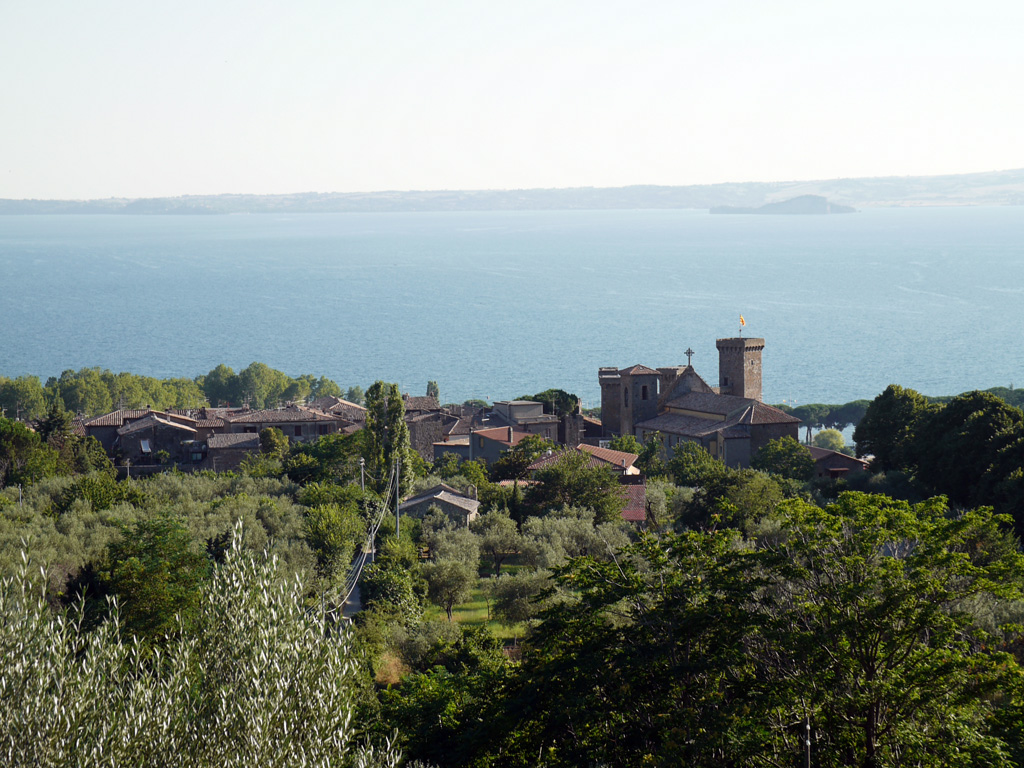
BOLSENA.
A town that gave its name to the lake, it preserves an ancient medieval village and is home to the Romanesque-style Collegiate Church of Santa Cristina, built in the 11th century over ancient and partly unexplored, Christian catacombs and a Chapel built in 1693 to commemorate the Eucharistic miracle of 1263. In the center of St. Christina’s Grotto is theAltar of the Miracle, with the stone on which, according to tradition, the saint stamped her footprint.
The altar of the miracle or of the four columns is linked to the memory of the Eucharistic Miracle that took place in 1263, when a Bohemian priest, tormented by doubts, about the real presence of Jesus in the Eucharist, stopped during his pilgrimage to Rome, celebrating a mass in the Grotto of St. Christine, during the consecration, the host in his hands began to ooze blood with which the corporal and some stones of the floor were stained.
The stones are placed today in the Chapel of the Miracle, while the corporal is kept in Orvieto Cathedral.
The Castle (13th-14th century) that dominates the village from above, recently restored, now houses the interesting territorial museum of the lake.
The Rocca Monaldeschi della Cervara stands on the medieval quarter, was built starting in the 11th century, at various times until the 15th century, when it became a symbol of the rule of the Monaldeschi di Cervara family over Bolsena.
DEMONSTRATIONS AND EVENTS.
The most traditional and spectacular also from a historical and cultural point of view is definitely the performance of the Mysteries of St. Christina, held every year on July 23 and 24. Dating back to the fifth century, the simulacrum of the saint is moved from the basilica that bears her name to the Church of the Most Holy Savior.As the statue parades, scenes representing the martyrdoms suffered by the child saint are depicted on stages set up for the occasion, the most famous being that of the snakes, in which snakes captured in the days leading up to the festival in the countryside are used.
The Corpus Christi flower displays, tapestries made by citizens on the occasion of the feast of the same name, with local and seasonal flowers that wind for about two kilometers, in the medieval quarter.
The Hydrangea Festival is traditionally held on the last weekend of June, the time of the flowering of plants found mainly along the lakefront, where the most famous national nurserymen also participate, transforming Bolsena in those days into a magnificent flower garden even in the streets of the medieval center, thus winning the title City of Hydrangeas.


